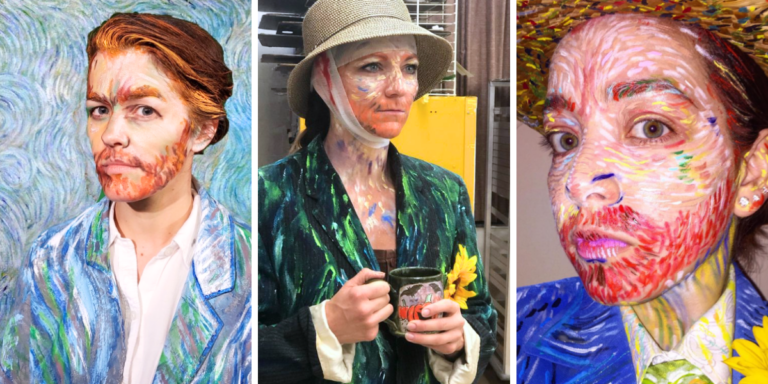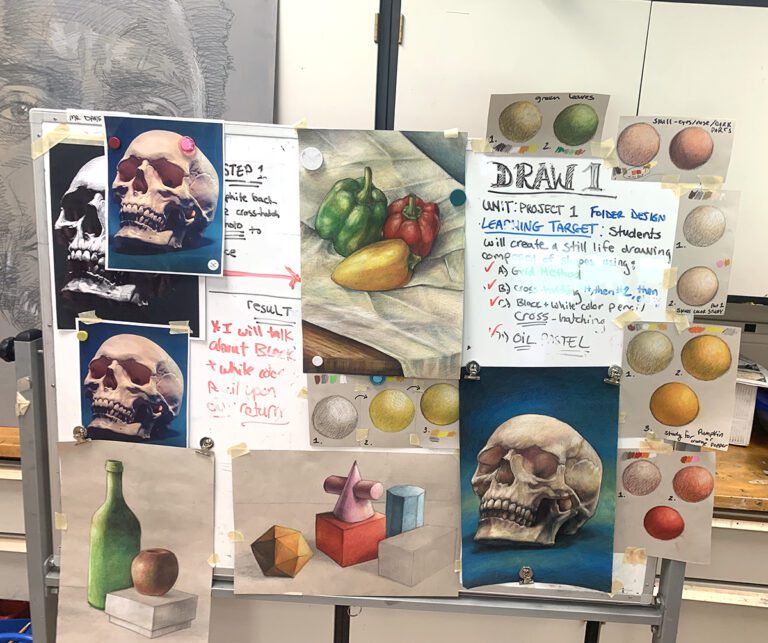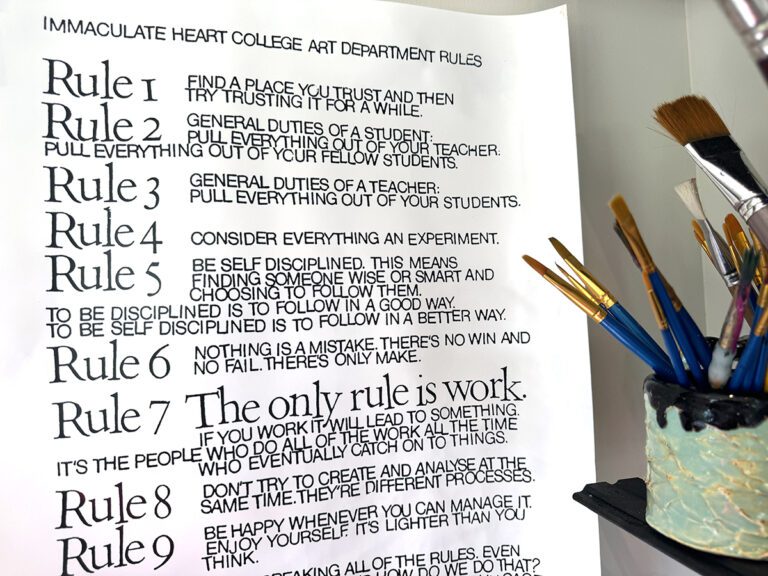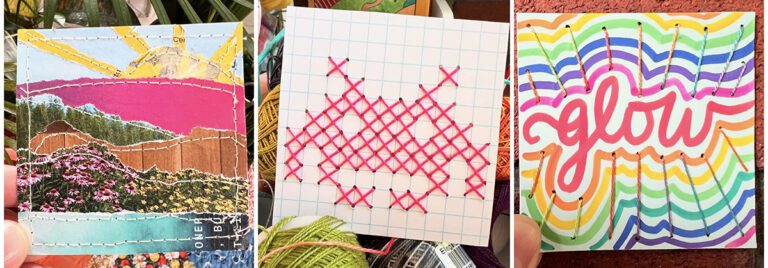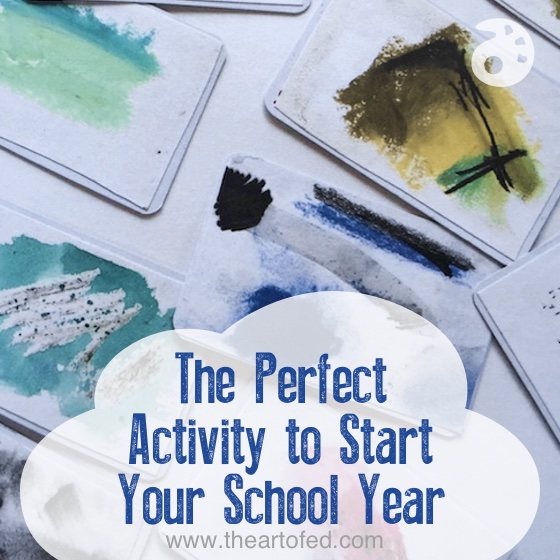
“You must pass on enough knowledge, information and access to materials to inspire and get children started, but you also need to create enough space to allow them to be in control of their own exploration.” Isn’t that just about the best way to describe our jobs as art educators? The quote comes from Paula Briggs, the Co-founder and Director of the visual arts education charity AccessArt, and is featured in her new book Drawing Projects for Children. It was here that I found the perfect activity to start your school year.
Paula’s Teaching Philosophy
Before we get there, however, I wanted to share a bit more about Paula’s philosophy. You see, Paula is a huge proponent of letting students take risks in the classroom. Her book is designed to help children loosen up and experiment with materials. The great thing, Paula says, is that children are natural risk takers, we just have to encourage it.
Paula told me a story that I think many of your students, or even you yourself, can relate to. I asked her what her drawing experiences were like as a child. She said that although she liked drawing and drawing materials, “I quickly got to that stage most children get to when they go from drawing anything as a child and loving it, to suddenly wanting their work to look more realistic and more “adult.” At that point, I stumbled. The reality was, I had no one to enable me to explore drawing and to explore the drawing materials.”
So, how can we as art educators help our students take risks, possibly fail, and yet still feel confident about drawing? Paula has a lot of brilliant ideas.
The Perfect Activity to Start Your School Year
One of my favorite activities in the book is called “Material Mark Cards.” This activity would be a powerful choice to include during your first few weeks of school. The project is a fantastic blend of observational drawing and experimentation and will introduce skills that your students can build on all school-year long. In addition, it’s super low-pressure, so all students will be excited to jump in.
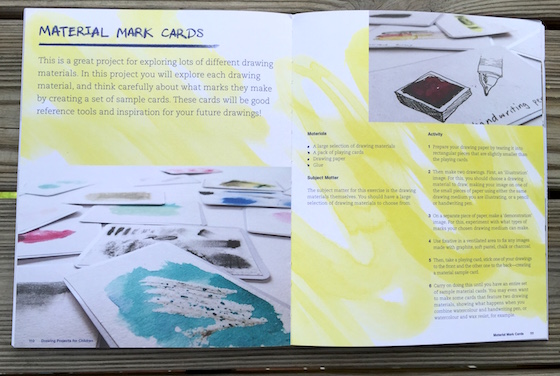
The activity asks students to explore the marks that different materials can make. For each material, students are asked to create two different drawings on two different small pieces of paper. On one piece of paper, they are asked to make an observational drawing of the drawing material itself. On the other piece of paper, they are asked to experiment with that material and see all the different marks it can create. All kinds of techniques are encouraged including scratching, stippling, dragging, blending, rolling and more. When finished, students glue each paper to the side of an old playing card, creating a “deck” of reference cards.
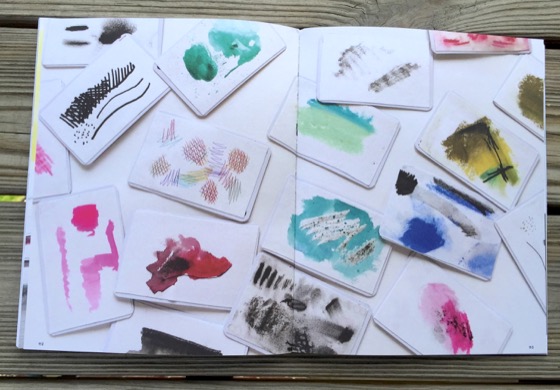
You could adapt this for a classroom full of students in so many ways. For example you could…
- Have each student create one or two cards and combine them to create a reference set for each class.
- Have each student create their own mini-deck of the top 5 materials they’ll use in your classroom.
- Glue the observational drawing and corresponding marks to separate cards to create a memory game.
- Create a large-scale collaborative installation with the results.
Want to Learn More?
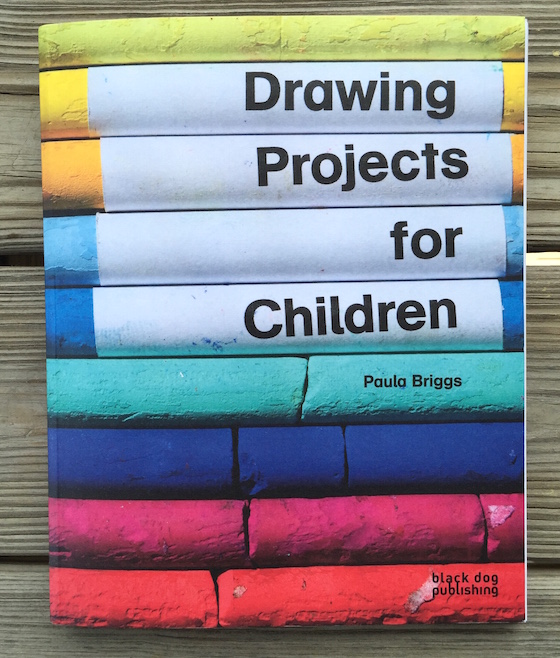
If you’re interested in more creative ways to help your students build their drawing skills, I would highly recommend Paula’s book. It is full of activities just like the one above that get students thinking about materials in new ways while building their skills at the same time. The book includes short warm-up exercises as well as activities that go deeper and take about an hour to complete.
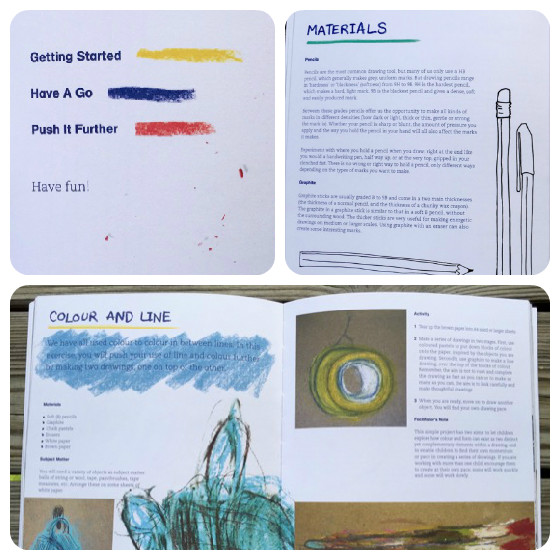
Although the book’s title is Drawing Projects for Children, I wanted to jump right into the activities and know they would be perfect for younger and older students alike. I can see teachers pulling out individual lessons, warm-ups for units or even just the overall philosophy and infusing it into what they do every day.
I will leave you with a warning: if you pick it up, you’ll probably get sucked into an afternoon of making art, so be careful!
Thanks so much, Paula, for sharing your expertise and wisdom with us!
What activities are you planning for the first few weeks of school?
How do you help students explore materials?
Magazine articles and podcasts are opinions of professional education contributors and do not necessarily represent the position of the Art of Education University (AOEU) or its academic offerings. Contributors use terms in the way they are most often talked about in the scope of their educational experiences.

